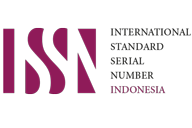Analisis Integrasi Angkutan Kota sebagai Feeder Angkutan Bus Trans Mamminasata Berdasarkan Tujuan dan Sebaran Pergerakan
DOI:
https://doi.org/10.53863/kst.v6i01.1015Keywords:
Integration, City Transport, Feeder, Distribution, MovementAbstract
The performance of public transportation and transit systems is highly dependent on the connection between the beginning and end of a journey by public transportation. A good multimodal integration approach will create connections between the main mode and other modes, thereby reducing travel time and distance. In an effort to improve services to the public, especially public transport users, new bus stops or stopping places can be planned as legal places for passengers to board and alight. The aim of this research is to determine the travel characteristics of Teman Bus passengers in terms of the purpose of movement and origin and destination of movement and to find out the recommended locations for additional bus stops/stop places for the integration of Teman Bus and City Transportation based on the purpose of movement and origin and destination of passenger movements. The analytical method used is descriptive statistical analysis and analysis of the distribution of stops based on passenger boarding and dropping points. The results of the research show that there are several alternative bus stop developments that can be carried out in the type of land use for trade and services for economic activity purposes and the type of land use for education for the purpose of cultural activities.
References
Anies, M. K., & Kasim, M. R. (2022). Level Of Service Pedestrian in Makassar to Support Multimodal Transportation. International Journal of Innovative Science and Research Technology, 7(3), 1240–1242.
Boarnet, M. G., Giuliano, G., Hou, Y., & Shin, E. J. (2017). First/last mile transit access as an equity planning issue. Transportation Research Part A: Policy and Practice, 103, 296–310.
Chandra, S., Bari, M. E., Devarasetty, P. C., & Vadali, S. (2013). Accessibility evaluations of feeder transit services. Transportation Research Part A: Policy and Practice, 52, 47–63.
Dill, J., Schlossberg, M., Ma, L., & Meyer, C. (2013). Predicting transit ridership at the stop level: The role of service and urban form. 92nd Annual Meeting of the Transportation Research Board, Washington, DC, 13–17.
Duduta, N. (2013). Direct ridership models of bus rapid transit and metro systems in Mexico City, Mexico. Transportation Research Record, 2394(1), 93–99.
Durning, M., & Townsend, C. (2015). Direct ridership model of rail rapid transit systems in Canada. Transportation Research Record, 2537(1), 96–102.
Handy, S., Tal, G., & Boarnet, M. G. (2016). Policy brief on the impacts of regional accessibility based on a review of the empirical literature. California Air Resources Board, California: Https://Arb. ca. Gov/Cc/Sb375/Policies/Regaccess/Regional_accessibility_brief120313. Pdf. Accessed July.
Kasim, M. R. (2021). Evaluasi Pemberlakuan Pembatasan Kegiatan Masayarakat (PPKM) Di Kota Makassar dalam Menurunkan Pergerakan dan Mobilitas. Prosiding Forum Studi Transportasi Antar Perguruan Tinggi, 462.
Kasim, M. R., Akram, A. M., Ramadhan, R., & Fauzan, A. (2023). Analisis Integrasi Angkutan Kota sebagai Feeder Angkutan Bus Trans Mamminasata. Syntax Literate; Jurnal Ilmiah Indonesia, 8(6), 3962–3974.
Krygsman, S., Dijst, M., & Arentze, T. (2004). Multimodal public transport: an analysis of travel time elements and the interconnectivity ratio. Transport Policy, 11(3), 265–275.
Ozbil, A., Peponis, J., & Bafna, S. (2009). The effects of street configuration on transit ridership. 7th International Space Syntax Symposium. Stockholm: KTH School of Architecture and the Built Environment.
Rahman, M., Akther, M. S., & Recker, W. (2022). The first-and-last-mile of public transportation: A study of access and egress travel characteristics of Dhaka’s suburban commuters. Journal of Public Transportation, 24, 100025.
Ramos-Santiago, L. E. (2021). Towards a better account and understanding of bus/rapid-transit interactions: The case of Los Angeles. Case Studies on Transport Policy, 9(3), 1167–1179.
Ridha, K. M. (2022). Evaluasi Skala Pelayanan dan Rencana Penambahan Halte untuk Pengembangan Transportasi Multimoda di Kota Makassar.
Shaheen, S. (2018). Shared mobility: the potential of ridehailing and pooling. Springer.
Sohn, K., & Shim, H. (2010). Factors generating boardings at metro stations in the Seoul metropolitan area. Cities, 27(5), 358–368.
Tilahun, N., Thakuriah, P. V., Li, M., & Keita, Y. (2016). Transit use and the work commute: Analyzing the role of last mile issues. Journal of Transport Geography, 54, 359–368.
Velaga, N. R., Rotstein, N. D., Oren, N., Nelson, J. D., Norman, T. J., & Wright, S. (2012). Development of an integrated flexible transport systems platform for rural areas using argumentation theory. Research in Transportation Business & Management, 3, 62–70.
Zhao, J., Deng, W., Song, Y., & Zhu, Y. (2014). Analysis of Metro ridership at station level and station-to-station level in Nanjing: an approach based on direct demand models. Transportation, 41, 133–155.
Downloads
Published
How to Cite
Issue
Section
License
Copyright (c) 2024 Muhammad Ridha Kasim,Ahmad Jihad

This work is licensed under a Creative Commons Attribution-ShareAlike 4.0 International License.
Authors retain copyright and grant the journal right of first publication with the work simultaneously licensed under a Creative Commons Attribution-ShareAlike 4.0 International License that allows others to share the work with an acknowledgment of the work’s authorship and initial publication in this journal

















